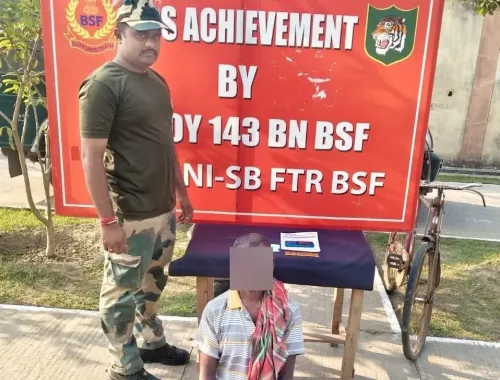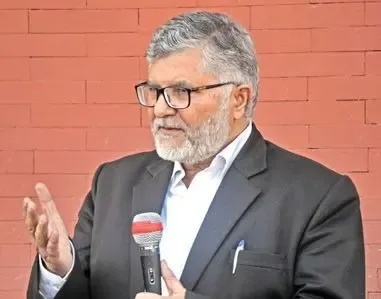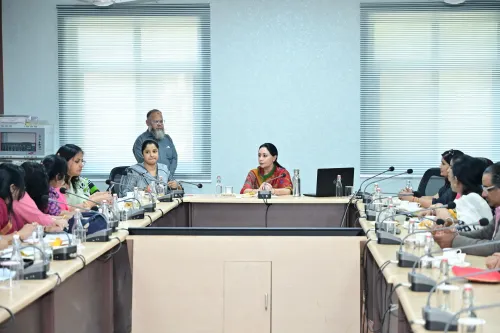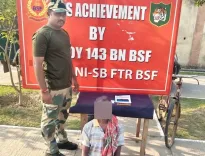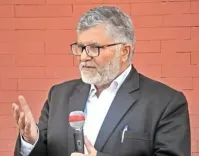Why Did Puri Experience a Massive Influx of Devotees on ‘Suna Besha’?
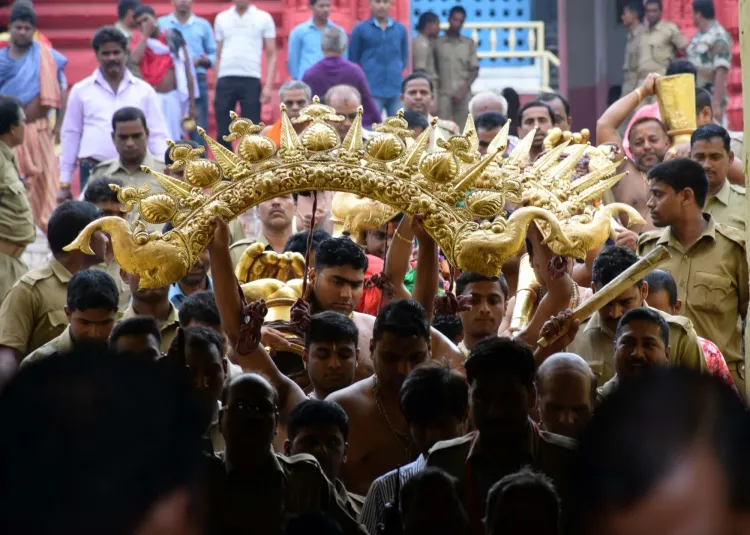
Synopsis
Key Takeaways
- Puri welcomed a massive crowd of devotees on July 6.
- The deities were adorned with approximately 208 kg of gold.
- Traffic congestion was reported due to the influx of pilgrims.
- Devotees are encouraged to plan their visits wisely.
- The ‘Suna Besha’ ritual has a rich historical significance.
Bhubaneswar, July 6 (NationPress) A massive crowd of devotees flocked to the revered coastal city of Puri on Sunday to witness the divine siblings - Lord Jagannath, Lord Balabhadra, and Devi Subhadra - embellished with exquisite gold ornaments, totaling approximately 208 kilograms.
The significant influx of pilgrims caught a glimpse of the celestial trio, gleaming with gold ornaments, which led to severe traffic congestion both in and around the city of Puri.
Earlier that day, the Odisha Police had issued a warning to devotees arriving in Puri that the designated parking areas were at full capacity.
Pilgrims traveling to Puri have been advised to wait for a few hours at Batgaon and Maltipatpur.
“Currently, there is an extremely heavy flow of vehicles from Bhubaneswar to Puri. The waiting time at Batgaon is approximately two hours. All devotees are encouraged to plan their visit accordingly,” stated the Odisha Police.
The police urged everyone to adhere to traffic advisories and cooperate with the officers on duty.
During the special ritual known as ‘Suna Besha’ or ‘Rajarajeswar Besha’, the deities will be adorned with gold hands, feet, garlands made of gold beads in various shapes and styles, a golden crown, gold Chakra (discus), silver conch, and gold ploughshare and pestle.
The Shree Jagannath Temple Administration (SJTA) previously announced that devotees could have Darsan of the deities from 6.30 pm to 11 pm on Sunday.
The ‘Suna Besha’ ritual for the holy siblings seated on their chariots was initiated during the reign of Gajapati King Kapilendra Deva, following a request from a prominent temple servitor, ‘Tadhau Karana’, in 1460 CE.
The king, who returned victorious from battles against Southern Indian rulers, generously donated cartloads of gold, diamonds, and other precious ornaments to the temple.


